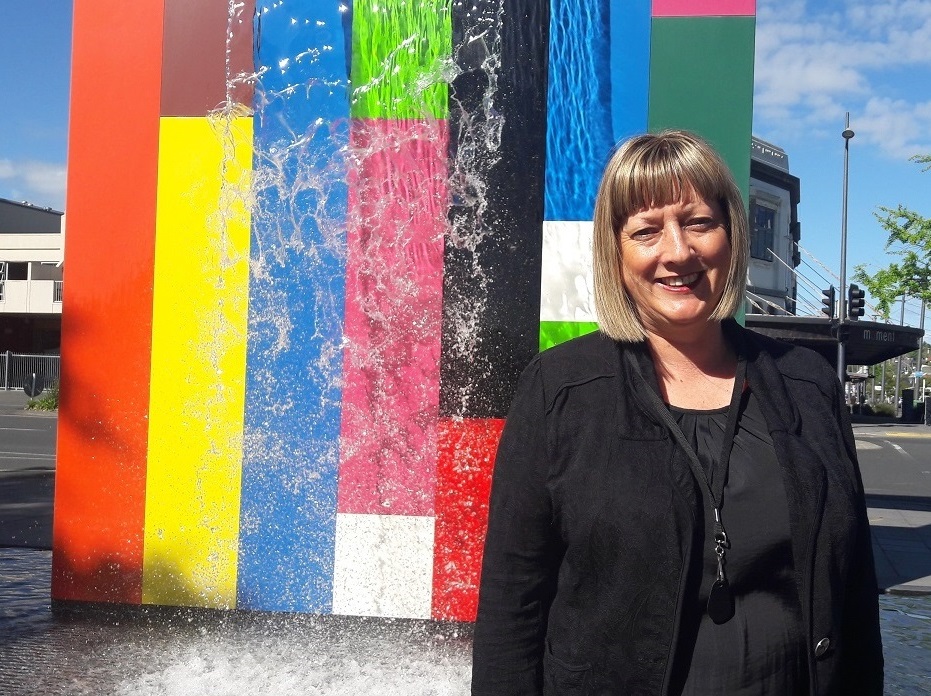The Tongue of the Dog proves popular
Waikato Museum director Cherie Meecham talks about how The Tongue of the Dog sculpture has contributed to exceeding museum visitor numbers and had a positive impact on the city.

Hamilton city’s latest street sculpture is proving a popular attraction and has contributed to the Waikato Museum’s growing visitor numbers.
The Tongue of the Dog sculpture, created by world-renowned New Zealand sculptor Michael Parekowhai, was installed outside the Waikato Museum on Victoria Street earlier this year.
The eight-metre-tall and 3.5 metres wide sculpture has had a positive impact on the city, igniting interest with its colour, vibrancy and story.
Waikato Museum director Cherie Meecham said there was “no doubt” the sculpture attracted people and in-turn inspired more folk to visit the Waikato Museum and ArtsPost.
“Waikato Museum has been exceeding expected visitor number targets this year and I attribute this to a range of factors including the exhibitions and events on offer, although the sculpture has possibly raised our profile as an arts and culture venue,” Meecham said.
She said the experience of the sculpture, its story, and the link to the museum and the Waikato River, created an introduction to visitors and a promise of more to come.
The story behind The Tongue of the Dog design is a legend about the Waikato River and its people.
A tongue of water pours from the eastern (river) side of the artwork, recalling the tongue of the servant dog who brought healing waters from Tongariro to Taupiri and in doing so created the Waikato River.
The colourful cuisenaire rods used in the sculpture are a repeating motif in Parekowhai’s work which he interprets as metaphors for biculturalism, communication and education. The rods were once used as an educational tool to teach maths. Nowadays these rods are used to teach languages, including Te Reo Māori, by a method known as Te Ataarangi.
“Our exhibitions, particularly the Te Winika gallery, connect beautifully with the story of The Tongue of the Dog, which has highlighted the little-known legend of the creation of our awa, the Waikato River,” Meecham said.
Mesh Sculpture Hamilton gifted The Tongue of the Dog sculpture to Hamilton city, with the help of donations received from more than 70 donors.
The Tongue of the Dog has quickly become a popular photo destination generating posts on social media of selfies in-front of the towering sculpture.
Hamilton Central Business Association general manager Vanessa Williams says she often sees people taking photographs and clustered around the sculpture as a meeting point.
“Artwork helps to bring vibrancy to the city and, being subjective, it opens up discussion between people and becomes a real talking point.
“It all adds to the Hamilton experience, providing a unique flavour to our city. These original artworks have a story to tell and provide each individual with their own interpretation to take away,” Williams said.
Hamilton resident Dylan Boggiss, 22, said at first sight he did not know what the sculpture was. “But after reading about it, it sort of represents Waikato history and represents the river as well, and I reckon it looks really nice, really cool.”
His nephew Jayden Campbell, 8, enjoyed posing for photos in front of the water feature sculpture and said it looks like Lego.
Wintec student Emily Meehan, 21, described the sculpture as an interesting piece of artwork. “I think it brings a sense of belonging to all the people in the Waikato because whenever people walk past the artwork they can have the connection to Waikato River and feel that they belong here in Hamilton,” Meehan said.
What is the story behind the Tongue of the Dog sculpture?
For further information about the Arts in Hamilton, click below to find out more:




